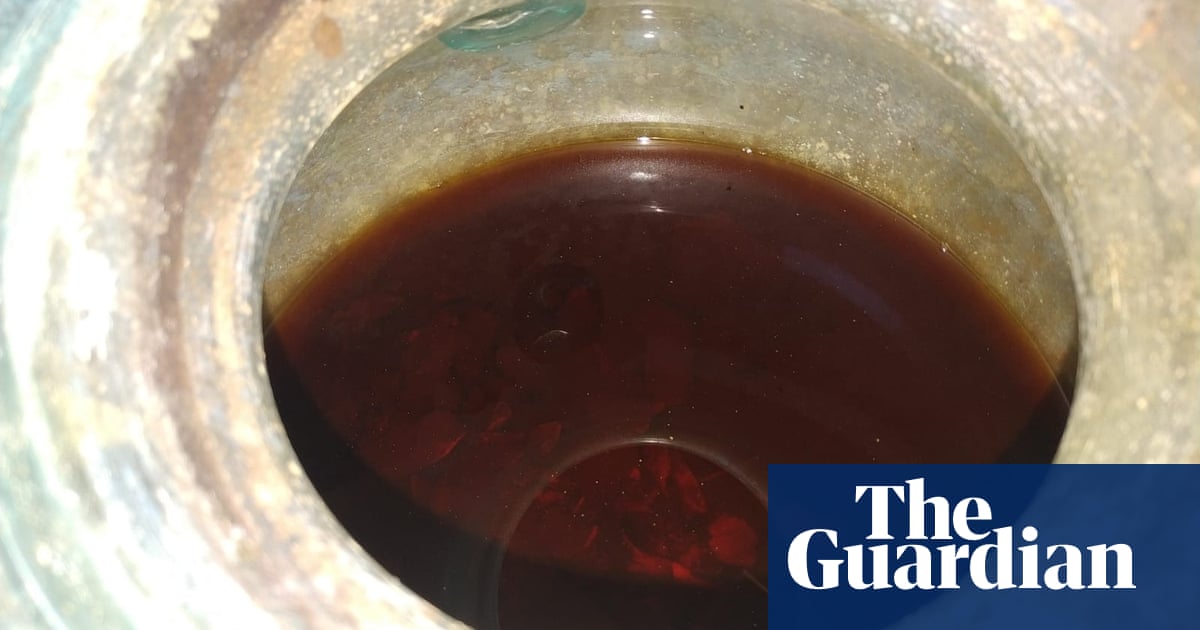The oldest wine ever to have been discovered in its original liquid form is reddish-brown and, quite conceivably, full-bodied. Reddish-brown because of the chemical reactions that have taken place in the 2,000 years since the white wine was poured into a funeral urn in southern Spain – and potentially full-bodied because the urn also contained, among other things, the cremated bones of a Roman man.
Analysis by experts at the University of Córdoba has established that the ancient tawny liquid inside the urn – which was found in a rare, untouched Roman tomb that was accidentally discovered in the Andalucían town of Carmona five years ago – is a local, sherry-like wine.
Prior to the discovery, which is reported in the Journal of Archaeological Science: Reports, the oldest wine preserved in a liquid state was the Speyer wine bottle, which was excavated from a Roman tomb near the German city of Speyer in 1867 and dated to about AD 325.
The Spanish urn was recovered in 2019 after a family having some work done on their house in Carmona stumbled across a sunken tomb on their property.
“It’s a sunken tomb that was excavated from the rock, which allowed it to remain standing for 2,000 years,” said José Rafael Ruiz Arrebola, an organic chemist at the University of Córdoba who led the analysis of the wine.
“You’ve got to applaud the civic spirit of the house’s owners who called the town’s archaeological department straight away. The town archaeologists quickly realised that the tomb was incredibly unusual because it hadn’t been raided or looted – Romans were proud, even in death, and used to build funeral monuments, such as towers, over their tombs so people could see them. They wanted to remain in people’s memories.”
The tomb contained eight burial niches, six of which held urns made from limestone, sandstone, or glass and lead. Each urn contained the cremated bone remains from a single individual and two of the urns were inscribed with the names of the deceased: Hispanae and Senicio.
Although the tomb made headlines last year when researchers announced that they had found a crystal bottle in one of the urns that contained a 2,000-year-old patchouli-scented Roman perfume, it had not given up all its secrets.
“There was an even greater surprise when the archeologists opened the urn and saw that it was full of liquid,” said Ruiz Arrebola.
“The urn also contained the cremated bones of a man and a gold ring decorated with a two-headed Janus. It was put in afterwards and the dead man wasn’t wearing it when he was cremated. There were also what could be the metal feet of the bed on which the body was cremated.”
Once Ruiz Arrebola and his team had established that the five or so litres of reddish liquid in the glass flask inside the urn hadn’t come from condensation or flooding, they set about analysing it. Tests showed it had a PH of 7.5 – close to that of water – and contained chemical elements very similar to those in today’s wines.
“We looked for biomarkers, which are chemical compounds that unequivocally tell you what a particular substance is,” said the chemist. “In this case, we looked for polyphenols exclusively from wine – and we found seven wine polyphenols. We compared those polyphenols with those from wines from this part of Andalucía – and they matched. So that confirmed it was wine. The next thing to do was to establish whether it was a white wine or a red wine.”
The lack of syringic acid, which forms when the main pigment in red wines decomposes, pointed clearly to a white wine – as did the local Roman mosaics showing people trampling white grapes.
after newsletter promotion
“The wine turned out to be quite similar to wines from here in Andalucía: Montilla-Moriles; sherry-type wines from Jerez, and manzanilla from Sanlúcar,” said Ruiz Arrebola.
The chemist and his team hope the techniques they refined and built upon during their investigations will help other researchers who study ancient food and wine.
“It’s been spectacular for us because we’re all passionate about the world of archaeological chemistry,” he said. “And anyway, it’s not every day that the oldest wine in the world turns up.”
All of which raises a rather indelicate question. Was none of them tempted – even fleetingly – to sample this remarkable, historic wine?
Ruiz Arrebola admits he half-jokingly suggested to the lead archaeologist, Juan Manuel Román, that they have “a tiny little glass” to celebrate the discovery.
“It’s not in the least bit toxic – we’ve done the microbiological analysis,” he said.
“But I’d have qualms about that because this wine has spent 2,000 years in contact with the cremated body of a dead Roman. The liquid is a bit murky because of the bone remains. But I guess you could filter it and try it. I’d rather someone else tried it first, though.”

